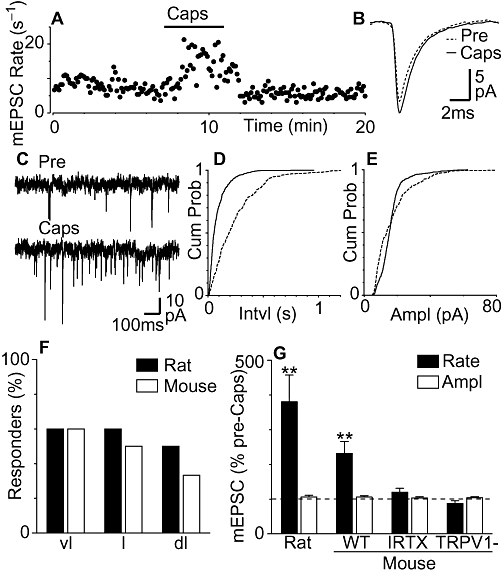Figure 1.

Capsaicin produces transient receptor potential vanilloid type 1 (TRPV1) channel-mediated enhancement of miniature excitatory postsynaptic currents (EPSCs) in subpopulations of rat and mouse periaqueductal grey (PAG) neurons. (A) Time course of miniature EPSC (mEPSC) rate during superfusion of capsaicin (Caps, 1 µM) in a mouse PAG neuron. (B) Average traces of miniature EPSCs before (Pre) and during capsaicin (Caps). (C) Raw current traces of miniature EPSCs before and during capsaicin. Cumulative probability distribution plots of miniature EPSC (D) inter-event interval and (E) amplitude before and during capsaicin. (F) Bar chart of the percentage of cells responding to capsaicin in the ventrolateral (vl), lateral (l) and dorsolateral (dl) PAG columns (n = 6/10, 6/10, 5/10). (G) Bar chart of the mean rate and amplitude of miniature EPSCs in the presence of capsaicin in PAG neurons from rats (n = 30), wild-type mice (WT, n = 24), wild-type mice in the presence of iodoresiniferatoxin (IRTX, n = 7) and TRPV1 knock-out mice (TRPV1-, n = 7), expressed as a percentage of the pre-capsaicin level (averaged across all neurons tested). In (G), **P < 0.01, significantly different from values before capsaicin. Traces in (A)–(E) are from the same neuron.
